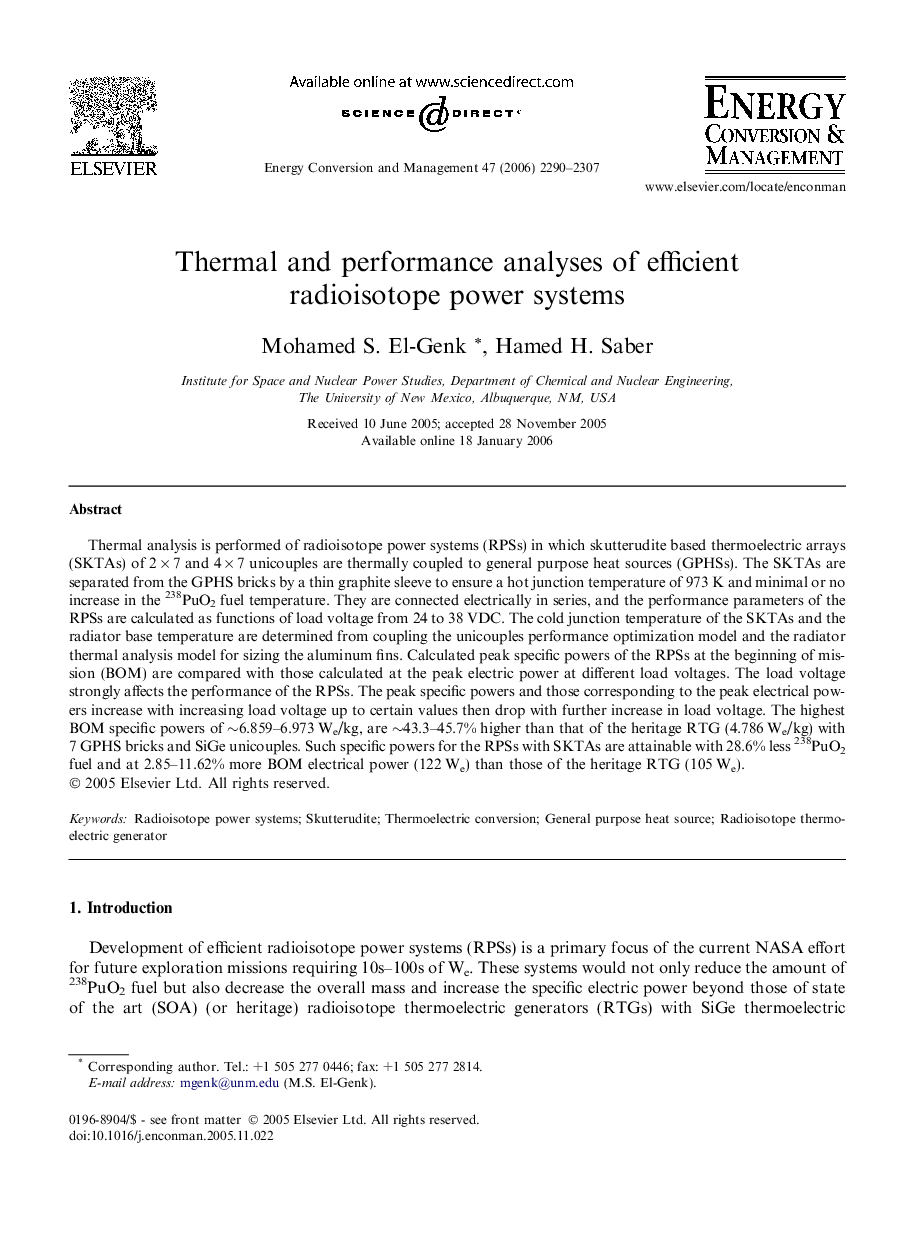| Article ID | Journal | Published Year | Pages | File Type |
|---|---|---|---|---|
| 773083 | Energy Conversion and Management | 2006 | 18 Pages |
Thermal analysis is performed of radioisotope power systems (RPSs) in which skutterudite based thermoelectric arrays (SKTAs) of 2 × 7 and 4 × 7 unicouples are thermally coupled to general purpose heat sources (GPHSs). The SKTAs are separated from the GPHS bricks by a thin graphite sleeve to ensure a hot junction temperature of 973 K and minimal or no increase in the 238PuO2 fuel temperature. They are connected electrically in series, and the performance parameters of the RPSs are calculated as functions of load voltage from 24 to 38 VDC. The cold junction temperature of the SKTAs and the radiator base temperature are determined from coupling the unicouples performance optimization model and the radiator thermal analysis model for sizing the aluminum fins. Calculated peak specific powers of the RPSs at the beginning of mission (BOM) are compared with those calculated at the peak electric power at different load voltages. The load voltage strongly affects the performance of the RPSs. The peak specific powers and those corresponding to the peak electrical powers increase with increasing load voltage up to certain values then drop with further increase in load voltage. The highest BOM specific powers of ∼6.859–6.973 We/kg, are ∼43.3–45.7% higher than that of the heritage RTG (4.786 We/kg) with 7 GPHS bricks and SiGe unicouples. Such specific powers for the RPSs with SKTAs are attainable with 28.6% less 238PuO2 fuel and at 2.85–11.62% more BOM electrical power (122 We) than those of the heritage RTG (105 We).
